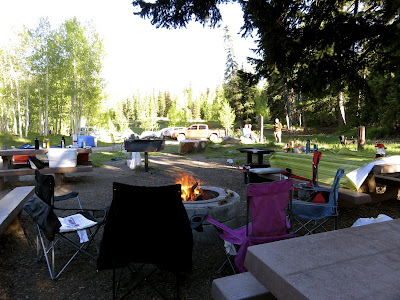Our day in Great Basin National Park was not going exactly as planned.
A good news/bad news scenario awaited:
A good news/bad news scenario awaited:
The good news: We woke to a glorious blue-sky framing the mountains above our
campsite in Wheeler Peak Campground and, after breakfast and coffee by the campfire,
drove into the backcountry for sightseeing.
 |
| This is why I camp. You can't beat a morning like this one in Great Basin National Park. |
The bad news: My Ford F-150's engine shut off after pulling out from our lunch stop at Baker Creek. Due to a malfunction in the key's computer chip, the engine no longer recognized the key. As a result the truck "thought" it was being stolen, and all systems were shut down.
I don't know about you, but I prefer my truck's engine not to do its own thinking.
The good news: We had cell service in this remote location, and AAA arranged for a tow truck to pick us up.
The bad news: It would be a five hour wait for the nearest available tow truck to arrive.
The good news: During the long wait my sisters, nephew and I would have time to hike the Baker Creek Trail, as previously planned.
The bad news: As we began our hike thunderstorms rolled in, trapping us in the truck for our five hour wait.
The good news: The tow truck finally arrived and in less than half an hour we were loaded and ready to go.
 |
| Lynn's Towing Service—from 150 miles away—to the rescue. |
The bad news: The nearest service station was 70 miles away in Ely, Nevada, where we would have to spend the night and have a new key re-programmed in the morning.
And now… the very good news: After turning west toward Ely on lonely Highway 50 the tow truck driver and we four weary passengers let out a collective gasp as we came upon this breathtaking scene:
A horizon-to-horizon double rainbow! Our driver stopped the truck and we all jumped out to gape at and to photograph this amazing phenomenon.
(Please click on this photo to enlarge.)
During all my years of outdoor exploration I’ve never been witness to a such a wondrous sight, and likely never will be again. That evening in the Ely Holiday Inn—far from our campsite in the national park—we four travelers agreed that the day’s travails and misfortunes had all been worth it, for that once-in-a-lifetime experience of joy and wonder in the Nevada desert.
Wishing joy and wonder to all, during this holiday season and beyond!





















